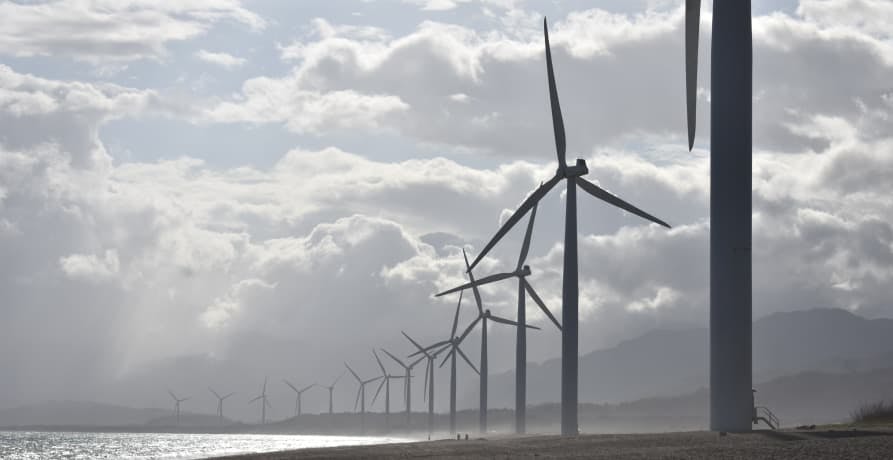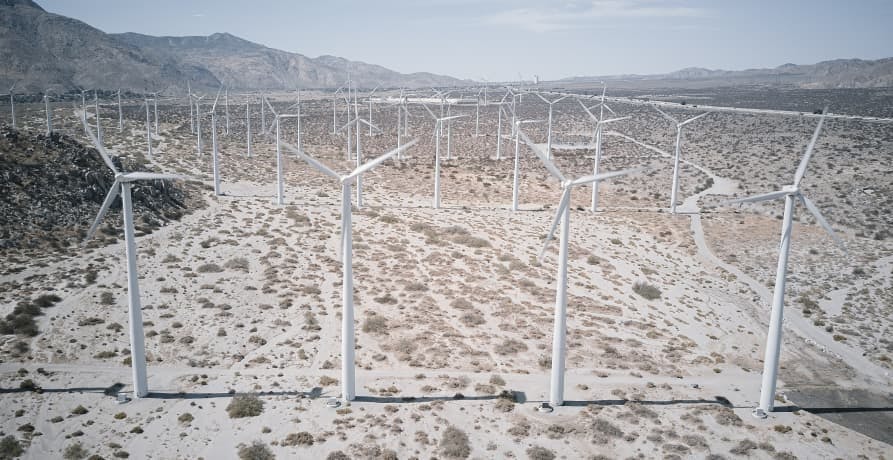
What are the 3 Pillars of Corporate Sustainability?
In this article, we'll explore what the 3 pillars of corporate responsibility are, why they're important, and how businesses can turn them into practical action.
ESG / CSR
Industries



Green electricity, generated from renewable sources like wind, solar, and hydro, is increasingly critical in today’s energy landscape. As concerns about climate change and sustainable energy sources intensify, the importance of green electricity in our transition to net zero is key. However, there are a lot of myths out there surrounding green electricity, and these misconceptions distort public perception and slow down the green transition.
This article aims to dispel these misconceptions by providing a clear, fact-based perspective. We will examine the most common myths about green electricity and counter them with factual information. So, let's cut through the noise and get to the heart of the matter: How much of what we hear about green electricity is based on fact, and how much is fiction?
👉 In this article, we'll debunk common myths about green electricity, replacing misinformation with facts to highlight the key role it plays in a sustainable future.
The perception that green electricity is prohibitively expensive is increasingly becoming a misconception. Recent advances in technology have significantly lowered the costs of renewable energy sources. Solar and wind power, in particular, have seen dramatic price reductions over the past decade. These cost decreases are a result of efficiency improvements, economies of scale in production, and advancements in technology.
Furthermore, government subsidies and incentives play a role in making green electricity more affordable. Many countries offer tax credits, rebates, and grants to encourage the adoption of renewable energy, effectively lowering the initial investment costs for both individuals and businesses.
When considering the long-term financial benefits, green electricity often works out as being more economical than traditional fossil fuels. The operational costs for renewable energy systems are generally lower, and they offer protection against the volatility of fossil fuel prices. Additionally, investing in green electricity can lead to significant energy savings over time, making it a financially sound choice in the long run.
👉 The development of renewable energy technology, combined with supportive government policies and the promise of long-term savings, debunks the myth that green electricity is too expensive.
💡 Discover the benefits of renewable energy on our blog.
The myth that green electricity is unreliable stems from early challenges in renewable energy technologies. However, significant advancements have been made since then, making modern green technologies highly reliable.
One key development is the improved efficiency and reliability of renewable energy sources like solar and wind power. These technologies have advanced to a point where they can consistently produce significant amounts of power. Moreover, the intermittent nature of sources like solar and wind is increasingly being mitigated through innovations in weather forecasting, allowing for better integration and planning in power grids.
Energy storage technology is another crucial factor in enhancing the reliability of green electricity. The evolution of battery technology, such as lithium-ion batteries, has led to more efficient storage of excess energy generated by renewable sources. This stored energy can be used during periods when solar or wind power generation is low, ensuring a consistent and reliable energy supply.
Additionally, the development of smart grid technology allows for better management and distribution of renewable energy, further increasing its reliability. Smart grids can adjust to changes in energy supply and demand in real-time, effectively balancing and distributing power from various renewable sources.
👉 The combination of technological advancements in renewable energy production, improved energy storage solutions, and smart grid technology has significantly bolstered the reliability of green electricity, challenging the myth that it cannot provide stable and consistent power.
Contrary to the myth that green energy has a minimal environmental impact, substantial evidence points to its significant positive effects on the environment, particularly in reducing carbon footprints and promoting ecological conservation.
Firstly, the carbon footprint reduction attributed to green energy is substantial. Renewable energy sources like solar, wind, and hydroelectric power produce little to no greenhouse gas emissions during operation.
This is why the shift to renewables plays a critical role in combating climate change. The Intergovernmental Panel on Climate Change (IPCC) has emphasised that transitioning to renewable energy is crucial for keeping global temperature rise below the critical 1.5°C threshold.
Additionally, renewable energy projects often have a smaller environmental footprint compared to fossil fuel-based projects. For example, solar farms can be integrated into existing agricultural land or built on rooftops, minimising land use. Wind farms, when carefully planned, have a relatively low impact on the surrounding environment and can exist alongside agricultural and marine activities.
Furthermore, the adoption of green energy reduces air and water pollution, which are direct consequences of burning fossil fuels. This leads to broader ecological benefits, such as healthier ecosystems and improved biodiversity.
👉 Green energy's role in reducing carbon emissions and its broader environmental benefits are undeniable. The data clearly shows that the adoption of renewable energy sources is a key component in our global efforts to mitigate climate change and create a more sustainable future.
💡 Learn why fossil fuels are so harmful for the environment in our article.
The belief that green electricity requires an excessive amount of land is a common misconception. In reality, renewable energy sources - particularly solar and wind - can be installed in a way that maximises land efficiency and even complements land use.
Solar farms, for example, don’t necessarily require large, dedicated areas. They can be integrated into existing structures, such as rooftops, parking lots, and along the sides of roads. This approach not only saves space but also converts otherwise unused surfaces into energy-generating assets.
Moreover, the concept of dual-use land use (also referred to as agrivoltaics), where solar panels are installed on agricultural land, demonstrates the efficient use of land for dual purposes. This practice allows for both electricity generation and agriculture practices to coexist. Studies have shown that this can lead to higher crop yields and reduced water consumption, making it a mutually beneficial relationship.
Wind farms are another example of efficient land use. The actual footprint of a wind turbine is relatively small, leaving the surrounding land available for other uses, such as farming. Additionally, offshore wind developments are gaining in popularity - by installing wind turbines offshore, you eliminate land use.
One more point is that the land footprint of renewable energy sources should be compared to the full lifecycle land impacts of fossil fuels. Renewable energy installations generally have a lower total land footprint when accounting for extraction, transportation, and processing activities associated with fossil fuels.
👉 Through efficient land use, innovative dual-use practices, and the development of offshore projects, green electricity can be a land-efficient energy solution.

The idea that the shift to green electricity is too slow to effectively combat climate change overlooks the recent rapid advancements and the significant potential of renewable energy. In recent years, the pace of transition to green electricity has accelerated, driven by technological advancements, decreasing costs, and increasing global commitment to tackling climate change.
💡 There has been rapid growth in terms of global renewable energy capacity and renewables now account for 30% of the global energy mix. This growth is particularly noteworthy in solar and wind energy, which have been the fastest-growing sources of electricity globally.
Technological improvements have also played an important role. Advances in solar panel efficiency, wind turbine design, and energy storage solutions have not only improved the performance of green electricity systems but have also made them more cost-competitive with traditional fossil fuel sources.
The future potential of green electricity is even more promising. Current trends and projections suggest that renewables will continue to grow at an even faster rate. For example, the International Energy Agency (IEA) forecasts that renewables are set to account for almost 95% of the increase in global power capacity through 2026, with solar PV alone providing more than half of this growth.
👉 The transition to green electricity is happening at a much faster pace than most people realise. The recent advancements and future potential of renewable energy based on current trends suggest that green electricity is not only viable but also essential in the fight against climate change.
The misconception that green electricity technologies are underdeveloped and inefficient is easily debunked by the latest technological advancements and efficiency statistics in the renewable energy sector.
In recent years, renewable energy technologies have undergone significant development, leading to enhanced efficiency and reliability. Solar photovoltaic (PV) panels, for example, have seen a substantial increase in efficiency. Modern solar panels are now capable of converting a much higher percentage of sunlight into electricity. In fact, the efficiency of the most advanced solar panels has increased from around 15% to over 23% in recent years.
Wind turbine technology has also seen significant advancements. Modern turbines are not only larger and more powerful but also more efficient in converting wind into energy. The capacity factor, which measures the efficiency of power generation, for new wind turbines has significantly improved. Wind turbines can now achieve an average capacity factor of between 35% to 50%, just ten years ago this was only 25%.
In addition to solar and wind, other forms of renewable energy like hydroelectric power and geothermal energy have proven to be highly efficient and reliable. For example, geothermal power plants typically have high capacity factors, often exceeding 90%, making them one of the most reliable renewable energy sources.
Energy storage, which is a crucial aspect of green electricity, has also seen major advancements. The development of more efficient and cost-effective battery technologies, such as lithium-ion and solid-state batteries, has significantly improved the storage and availability of renewable energy.
These technological advancements are not just limited to enhancing efficiency; they also contribute to the overall cost-effectiveness of green electricity. When it comes to renewable energy sources, the average net cost to produce electricity has been steadily decreasing, making them increasingly competitive with traditional fossil fuels.
👉 The claim that green electricity technologies are underdeveloped and inefficient is no longer true. The latest technological advancements and efficiency data show that renewable energy technologies are now at the forefront of efficient and sustainable power generation.

The claim that solar and wind energy can’t provide continuous electricity due to their dependence on weather conditions is a misconception. Advancements in energy storage and grid management technologies mean that this is not the case.
Modern energy systems are increasingly capable of overcoming the intermittent nature of solar and wind power. One of the key solutions to this challenge is the integration of advanced energy storage technologies. Battery storage systems, particularly those based on lithium-ion technology, have seen significant improvements in capacity, efficiency, and cost. These systems can store excess energy generated during sunny or windy conditions and release it when needed, ensuring a consistent energy supply.
Furthermore, grid operators are now using sophisticated forecasting tools and grid management systems that enhance the predictability and reliability of renewable energy. These systems allow for more accurate predictions of wind and solar generation patterns, enabling better planning and balancing of energy supply with demand.
Diversification of the energy mix is another strategy that is used to ensure grid reliability. By combining different renewable energy sources, such as solar, wind, hydroelectric, and geothermal, along with energy storage, the grid can be more resilient and less dependent on a single source of power. This diversified approach leverages the strengths of each energy source and minimises the impact of their limitations.
Interconnecting regional and national grids also offers a solution. By linking different geographical areas, regions with surplus renewable energy can supply areas with deficits, balancing the overall energy availability.
👉 The combination of advanced energy storage, improved forecasting and grid management, diversification of the energy mix, smart grid technologies, and grid interconnectivity effectively addresses the intermittent nature of solar and wind energy. These advancements mean that renewables can power a grid that reliably provides electricity around the clock, all year round.
💡 Learn more about a future without fossil fuels in our article.
At Greenly we can help you to assess your company’s carbon footprint, and then give you the tools you need to cut down on emissions. Why not request a free demo with one of our experts - no obligation or commitment required.
If reading this article has inspired you to consider your company’s own carbon footprint, Greenly can help. Learn more about Greenly’s carbon management platform here.